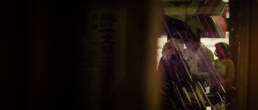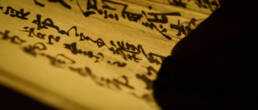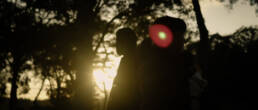How Visual Arts Breathe Life into Reality: A Philosophical Exploration
In a world inundated with images, what makes a fleeting visual linger in the mind? What turns a mere observation into an experience? The answer lies not only in the object presented, but in the way it is contextualized within the realms of time and space.
Consider a short video clip of a mushroom cloud rising, unanchored in time or place. To a Japanese viewer, it might evoke the devastating history of nuclear warfare. But when paired with a simple caption, “One hour ago in Moscow,” the narrative springs to life. Suddenly, the image is not just a visual phenomenon, but a story unfolding in real time, bridging the gap between the viewer’s world and the universe contained within the frame.

Explore the philosophical connection between time, space, and reality in visual arts. Understand how films create a sense of authenticity, and how artists can enhance the viewer’s experience. A profound look into human perception through cinema.
Time, Space, and Reality
The coupling of time and space creates a sense of reality that resonates with the viewer’s existing concepts and experiences. It becomes more than mere entertainment; it becomes a reality imbued with authenticity. This is more than a mere aesthetic realization; it is a philosophical insight into the nature of human perception.
In the realm of cinema, this principle extends to the interaction of the visual and auditory senses. Research over the years has shown that movies can induce illusions of taste, touch, and smell. These synaesthetic experiences enhance the film’s reality, narrative, and proximity to the viewer’s life.
Visual arts transcend mere representation, inviting viewers into a carefully constructed world that resonates with human perception. This article explores the role of time and space in creating a sense of reality in cinema, revealing a deep understanding of the human psyche.

The challenge of fiction
Creating a sense of reality in fictional cinema is a unique challenge. While the image of a mushroom cloud on a clear day may suffice for a generic movie setting, introducing the urgency of “now” heightens the experience. This temporal immediacy brings the fictional narrative closer to the viewer’s reality, making it more tangible and engaging.
The Philosophy of Perception
What this exploration reveals is a profound understanding of how we perceive reality through art. Visual arts are not mere representations; they are invitations to a world constructed with care and precision. They play with our senses, deceive them, and yet make us feel more connected to the world.
Ultimately, the art of visual storytelling is a dance between illusion and truth. It is a philosophical endeavor that seeks to understand the human condition, resonate with our deepest emotions, and bring us closer to understanding the world we live in.
Artists and filmmakers must navigate this complex landscape with skill and sensitivity. It is a journey that requires more than technical expertise; it requires a deep understanding of the human psyche and a willingness to explore the uncharted territories of perception.
The visual arts, then, are not merely a means to an end. They are a profound exploration of what it means to be human, an endeavor that elevates our existence and enriches our understanding of ourselves and the world around us.

